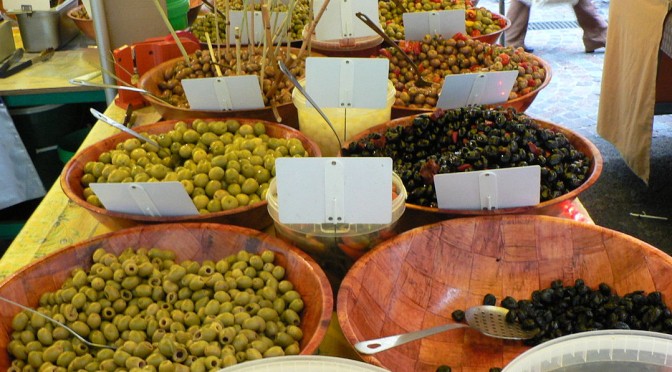
PK’s new doctor recently suggested she try the paleo diet to improve her health. With this pronouncement in mind, I took a look at some of the paleo recipes and chose some that I thought I could adapt to low carb that would suit both of us. As a result of this quest, I will be posting more recipes that work for both low carb like Atkins and South Beach as well as ones that work with keto and paleo.
This is a delicious recipe that I found as Orange Rosemary Salmon at PaleoLeap.com. I didn’t have any rosemary, so I substituted basil. Dried basil at that. But it worked exceptionally well, and we loved the flavor of this dish. I grilled the salmon on my new Copper Chef stove-top grill, which worked perfectly, and I cleaned it up in just a few minutes after I was done. Yay for that! I even grilled the asparagus spears along with it. The side serving that looks a bit like rice is actually riced kohlrabi, which is amazingly delicious when cooked with a bit of broth, butter, and basil.
If you were going true paleo, you would use all fresh ingredients and your chicken stock would be made from chicken bones. I, on the other hand, made mine from Better Than Bullion.
Orange Basil Salmon
Atkins, Keto, and Paleo-friendly
2 salmon fillets (about 1/2 lb)
1 garlic cloves, minced
1 teaspoon fresh Basil, minced 0r 1/2 teaspoon dried
1/2 cup fresh orange juice
1 tablespoon fresh lemon juice
1/4 cup chicken stock
1 teaspoon orange zest
1 teaspoon Olive Oil
Salt and Pepper
Use a grater or zester to scrape the orange skin until you have 1 teaspoon of orange zest. Cut the orange and squeeze out as much of the juice as you can from one large orange. I use a little of the pulp as well since I like to have it in my sauce. Combine the orange juice, lemon juice, chicken stock, and zest.
Heat the grill on high heat until hot, then turn to medium heat. Brush the salmon fillets with a little olive oil then season with salt and pepper. Place on the grill with skin side up and cook until the salmon is about half-way done, about 5 minutes. Flip so the skin side is down and continue to cook another 4 to 5 minutes. (Time will vary based on the heat and thickness of the salmon.) Add any vegetables to the grill at this point.
On another burner, heat up a saute pan and add a teaspoon of olive oil or cooking fat. Cook the garlic and fresh basil in it for a minute or so. If using dried, add it to the orange juice mixture. Pour the juice and broth into the pan and stir well. Lower the heat to medium-low and add salt and pepper to taste, about a pinch of pepper and 1/8 teaspoon of salt. Stir and cook until the mixture begins to thicken.
Meanwhile, check on the salmon as you work and turn any vegetables that need it. When the flesh looks done all the way through, use a pancake spatula and slide it between the skin and the meat. The salmon will lift off easily. Transfer it to a serving plate and spoon or pour half the orange sauce over the top.
Serve with vegetables and riced cauliflower or kohlrabi. Makes two servings.
Riced Kohlrabi with Basil
1 medium (4″) Kohlrabi
1/4 cup Chicken Broth or Better Than Bullion
1/2 teaspoon dried Basil
Pinch Salt
1 tablespoon Olive Oil, Coconut Oil, or Butter
Prepare this before you begin the main meal.
Peel kohlrabi, cut into cubes and put in the food processor. Pulse until the vegetable is chopped into rice-sized pieces.
In a skillet, add oil or butter, then add the kohlrabi. Stir and cook for about a minute, then add the broth, bring to a boil, then lower the heat to a simmer. Add water if it is too dry. The kohlrabi will take about 20 minutes to cook until it is tender. Add seasonings about part way through.
When done the kohlrabi should look like rice in texture. Makes about three half-cup servings.







